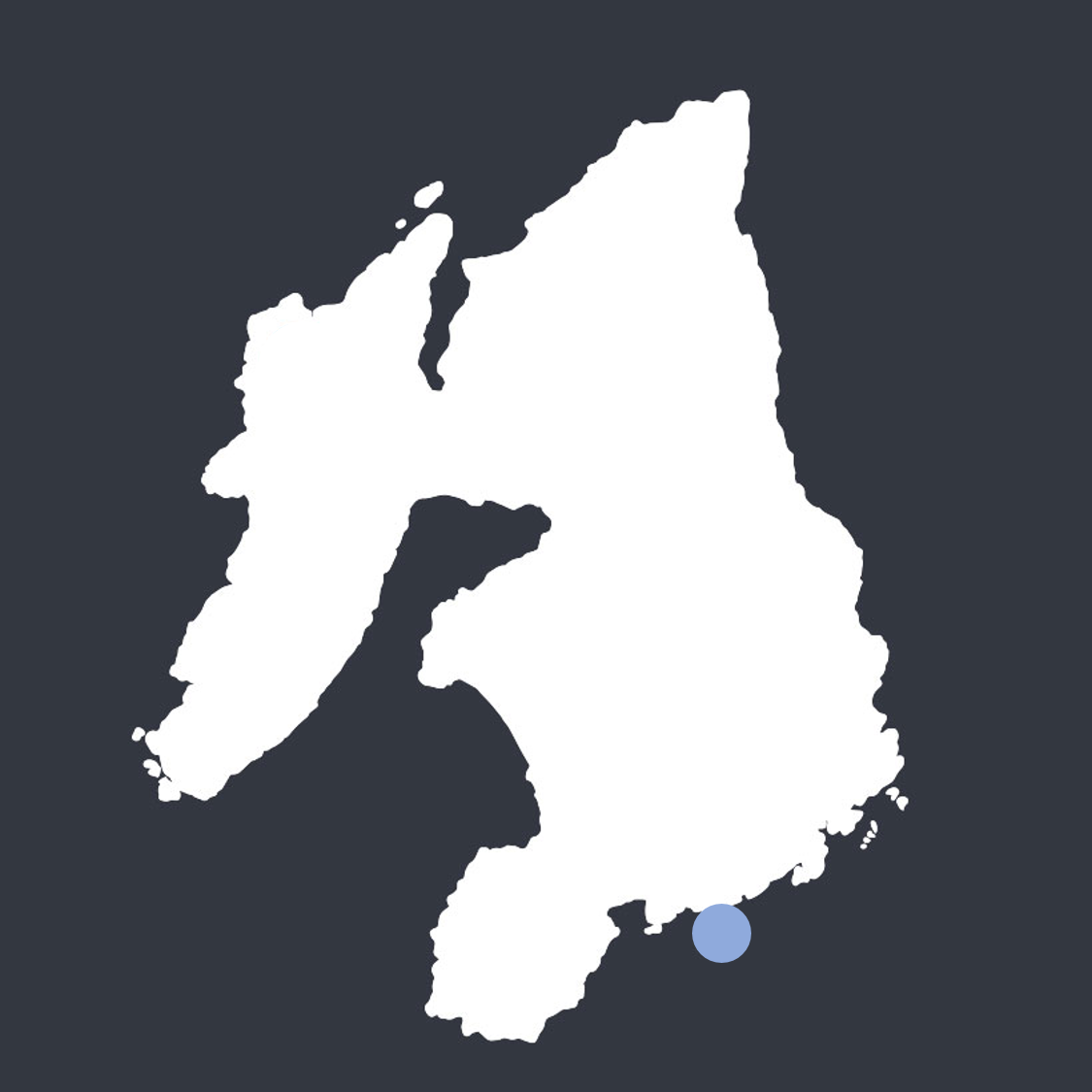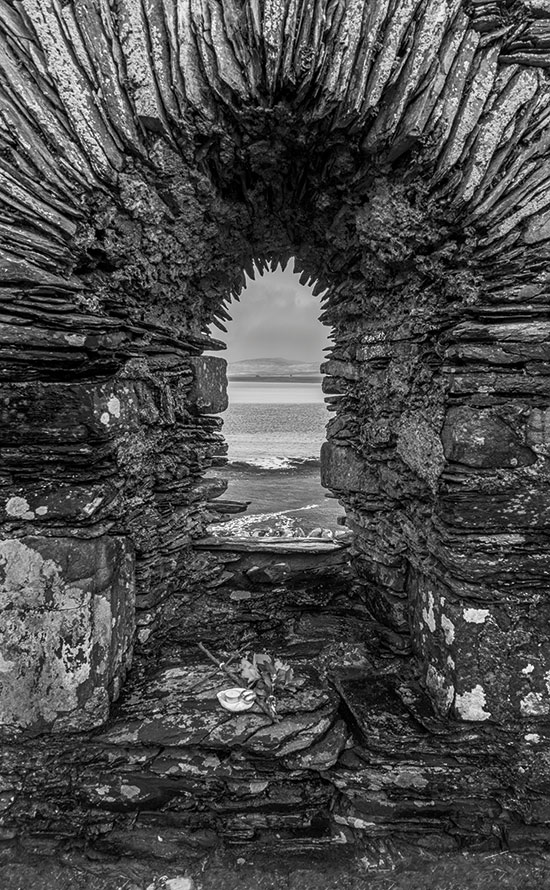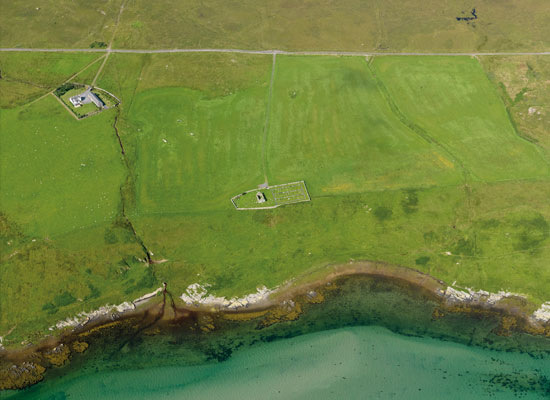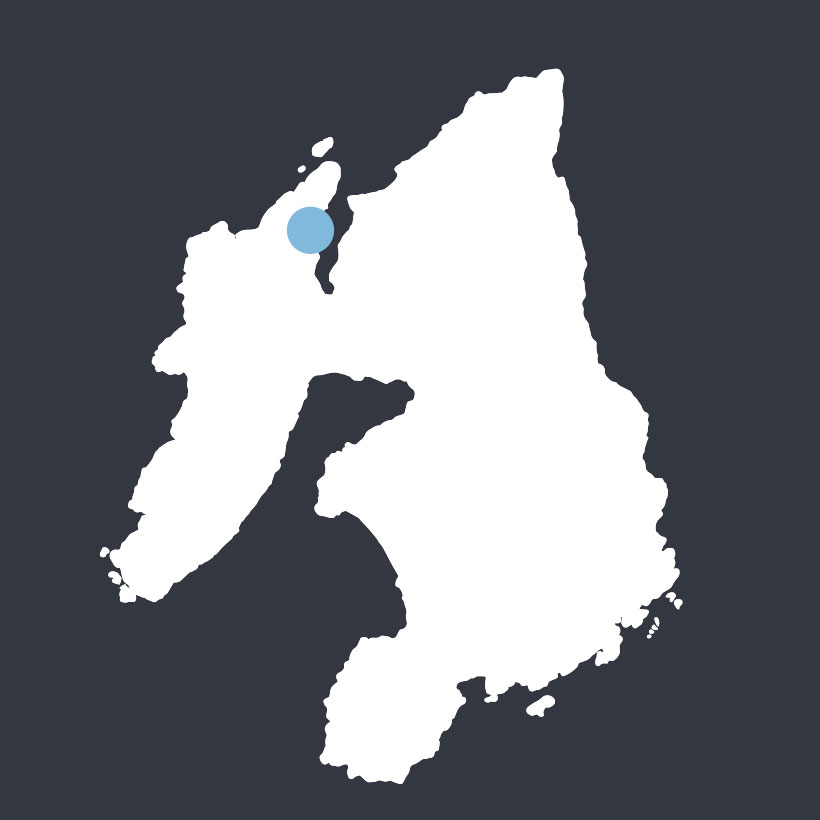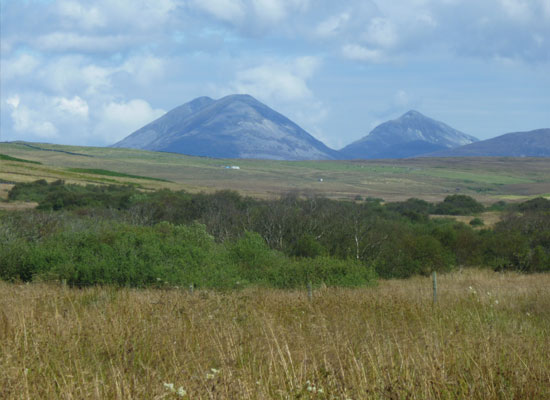
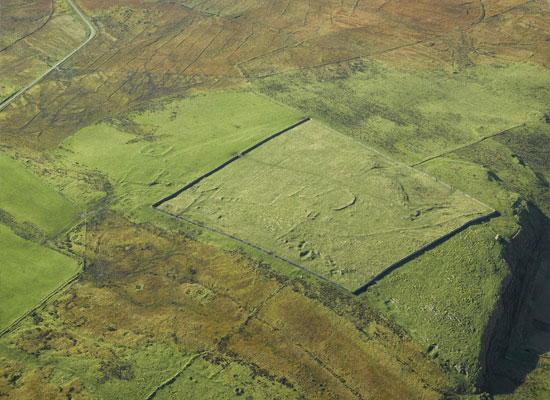
Àirigh Ghuaidhre
Images: Top, Steve Mithen Below, Crown copyright, Historic Environment Scotland This is a deserted township consisting of nine longhouses, two subsidiary buildings, six limekilns and a string of interconnecting stock enclosures and boundaries, seen at distance from the west, above, and in an aerial view below. Amidst the 19th century buildings are traces of probable prehistoric structures. Nearby is the late Mesolithic site of Storakaig, dating to around 6,500 years ago, marked by the small white polytunnel below the Paps of Jura. Just as at other key locations elsewhere on Islay, Àirigh Ghuaidhre was a favoured place for settlement throughout prehistoric and historic times.
Further information (external link and PDF brochures):
Download the brochure: EIMP supplementary report Airigh Ghuaidhre
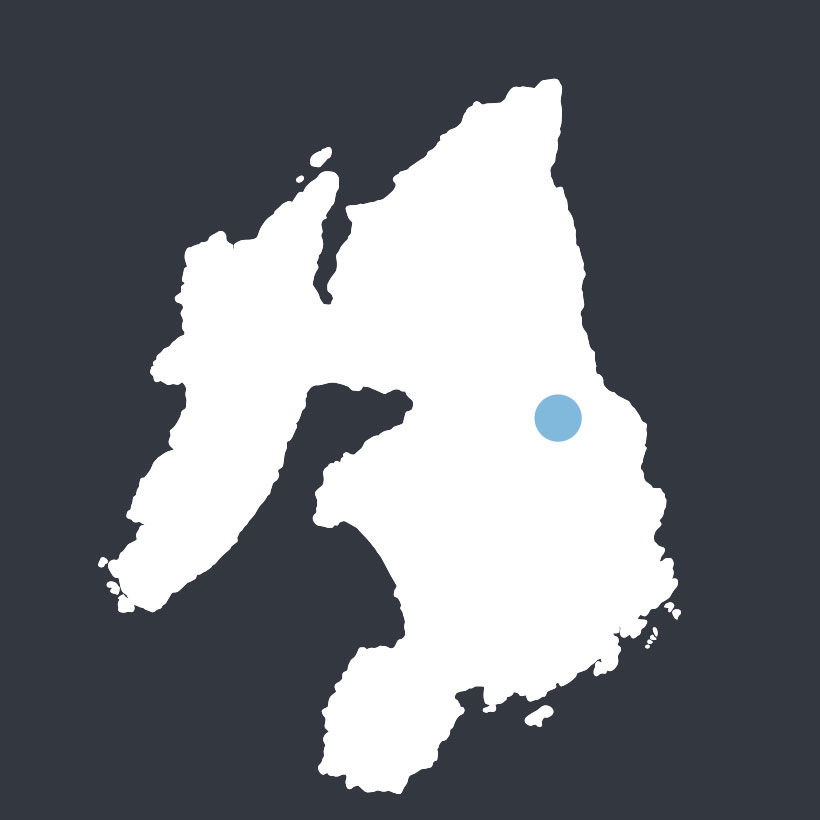
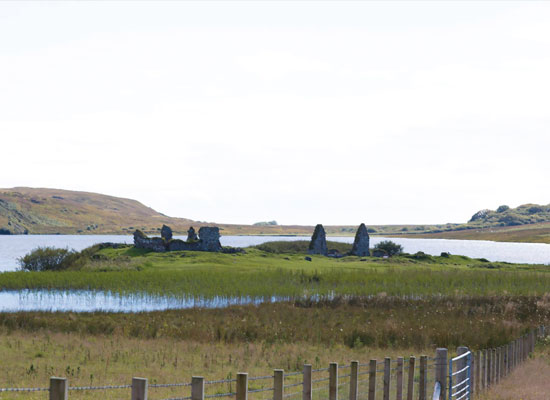
Finlaggan
Image: Sarah Lambert-Gates
Between the 13th and 15th centuries, Finlaggan was the administrative centre of the Lordship of the Isles, the chiefs of Clan MacDonald. A fortified residence was built on the island of Eilean Mór while a council chamber is likely to have been situated on the adjacent island of Eilean na Comhairle. Finlaggan also has a long history of prehistoric settlement, and was the location for a 16th century township, represented by the standing ruins today.
Further information (external links):
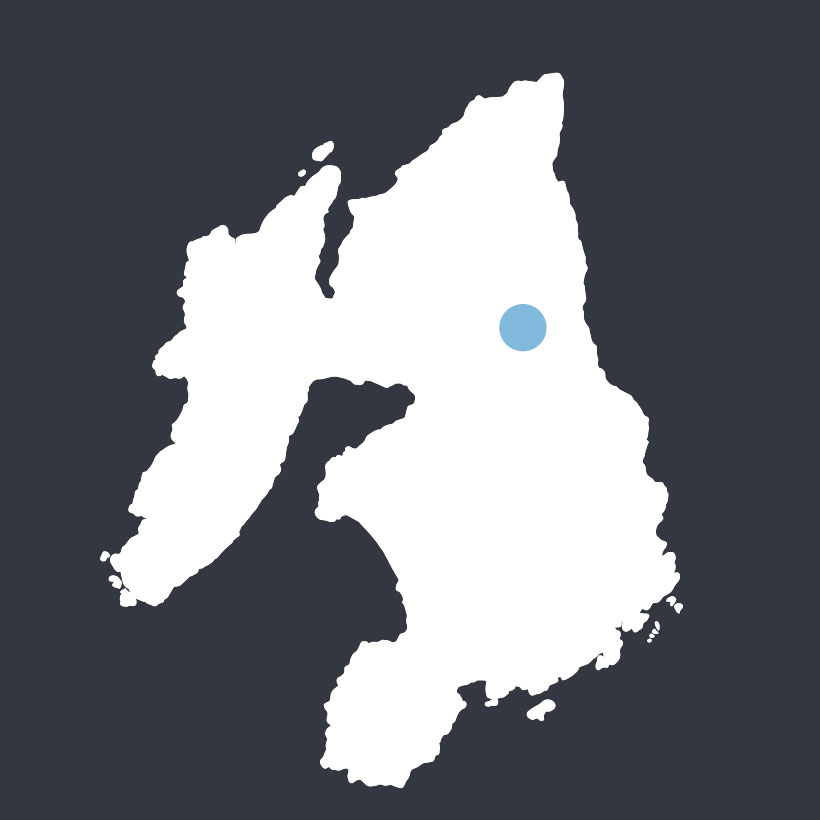
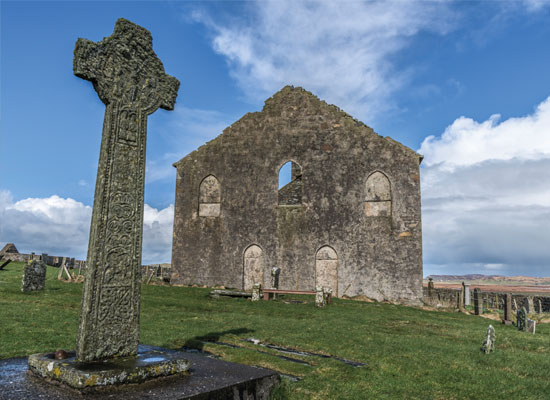
Kilchoman
Image: Steve Mithen
The ruined church at Kilchoman was originally constructed in 1827, replacing a medieval church, which was itself a successor to an Early Christian sanctuary. The cross dates to around 1300 and is carved in the same style of those found on Iona. Its east face depicts the crucifixion, and the side arms are decorated with angels. Other figures include a depiction of the man who paid for the cross, and his father whom it commemorated. It has a Latin inscription that translates as “This cross is by Thomas, son of Patrick the doctor. It is for the souls of his father, his mother and his wife, and the souls of all the faithful departed, and of the said…” at which point it appears to run out of space. Access to the site is currently restricted due to the danger posed by falling masonry from the church. Visit the Commonwealth War Graves Commission website for more information.
Further information (external link):
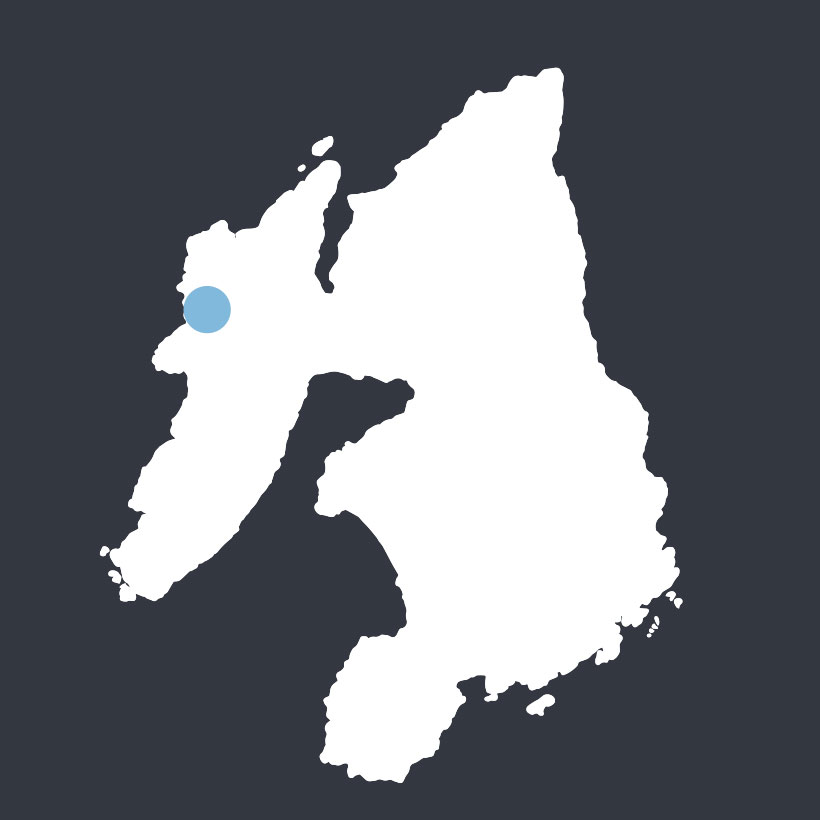
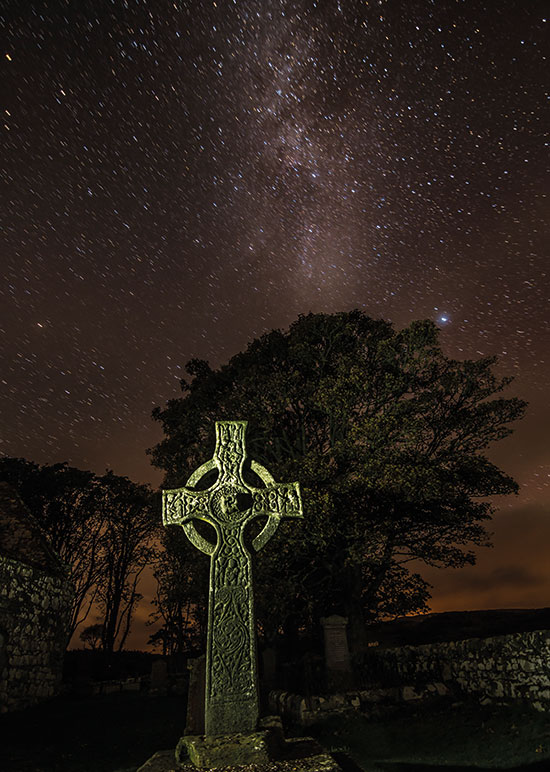
Kildalton Cross
Image: Niall Colthart
This is one of the finest Early Christian Crosses in Scotland dating to the 8th century, with close similarities to those found on Iona. It depicts Biblical scenes of Cain murdering Abel, Abraham sacrificing Isaac, and David killing the lion. Elsewhere, the Virgin and Child are depicted, along with entwined serpents with biting heads, as well as lions and birds eating grapes.
Further information (external links):
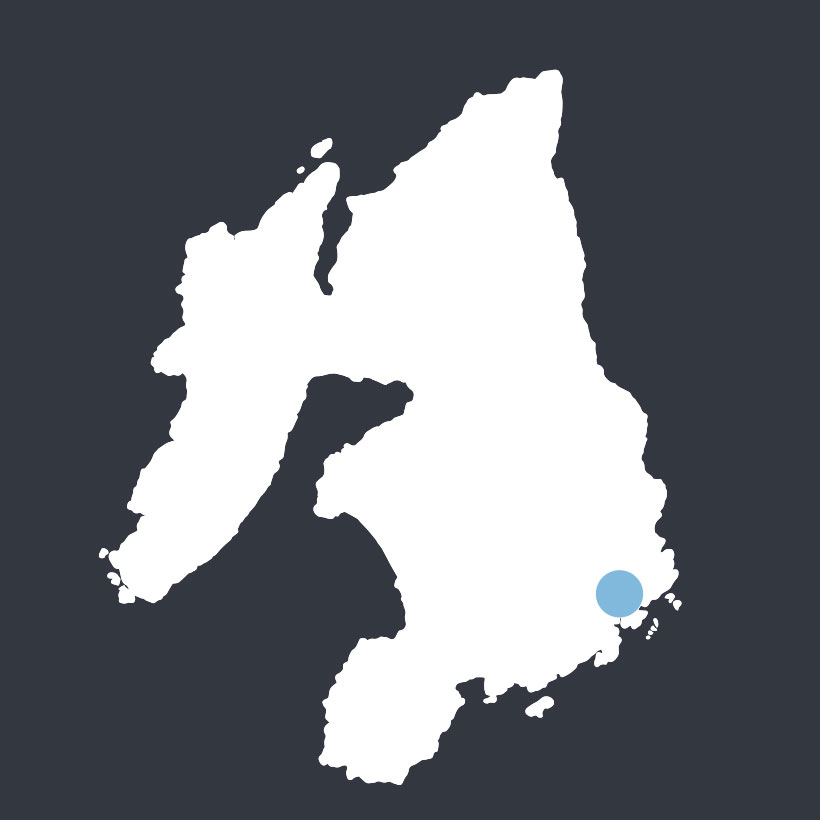
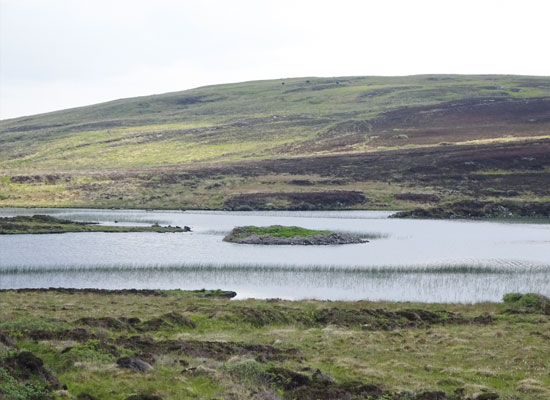
Loch Corr
Image: Steve Mithen
This crannog has a defensive wall around the small circular island, enclosing two buildings that appear to have been fortified. The crannog was accessed by a causeway, now represented by a line of boulders emerging from the water. The character of the wall and buildings suggest they date to the late medieval period.
Further information (external link):
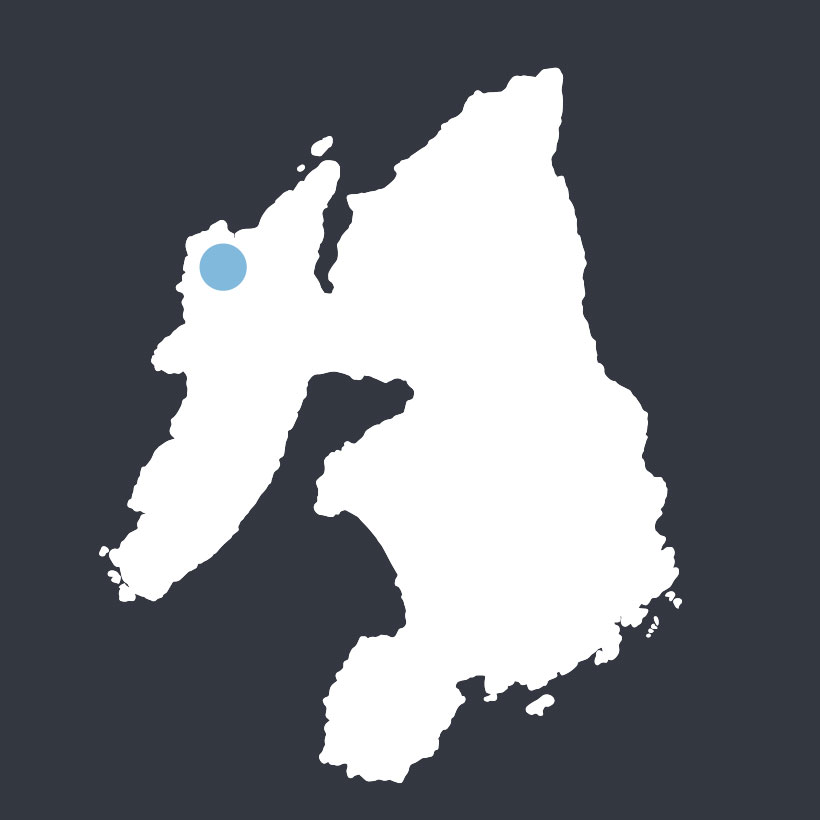
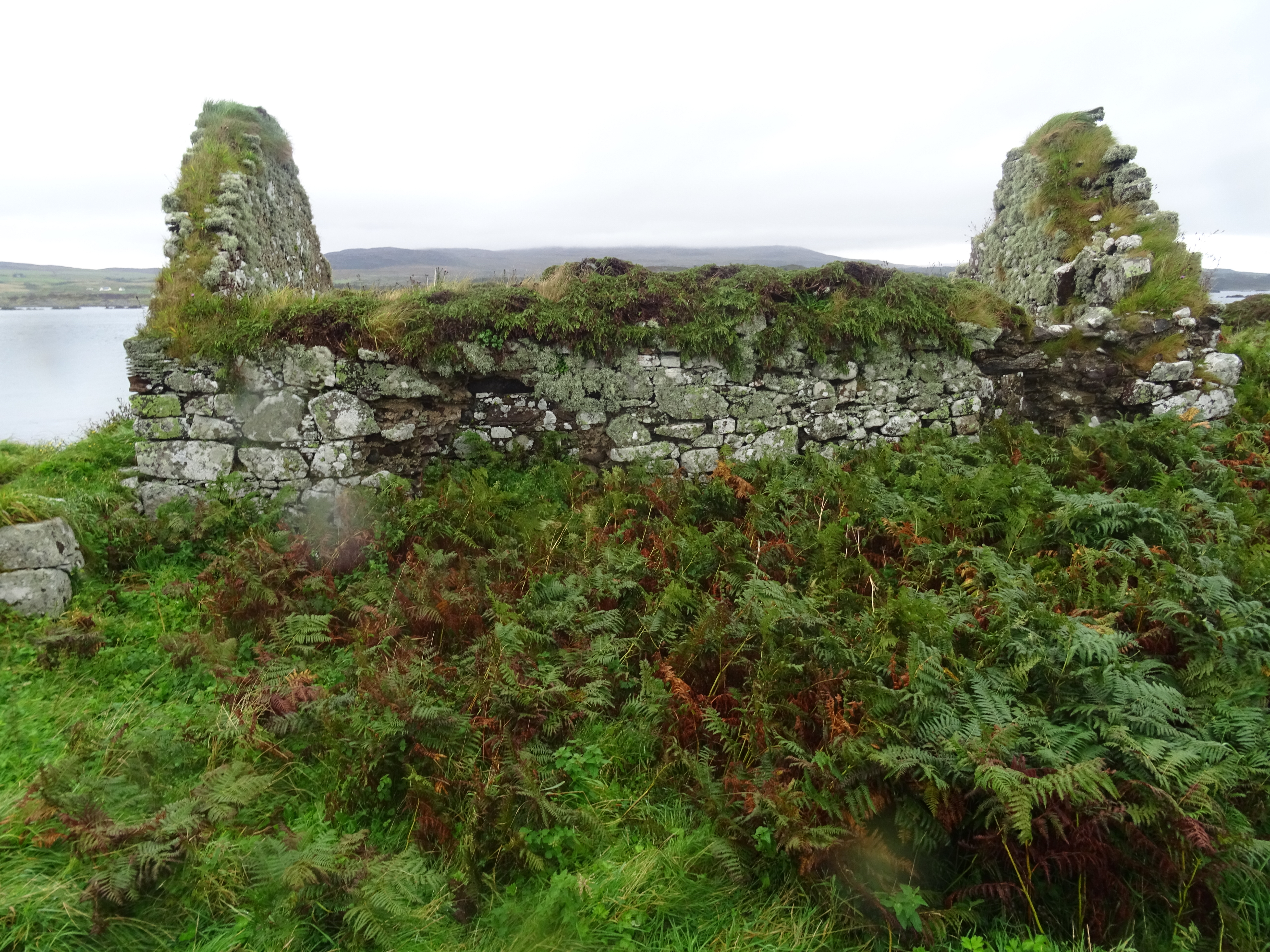
Texa Chapel
Image: Steve Mithen
Located on the Isle of Texa, this chapel is dated to the Medieval period and was dedicated to St Mary the Virgin. Some 16th century records show that the chapel was endowed with the lands of Cragabus, the ‘two Kilbrides’, and the Isle of Texa. Various Medieval monuments were discovered near the chapel and taken to Kildalton House, including a cross-shaft erected in the late 14th century by Reginald, son of John of Islay. John of Islay is described in Gaelic sources as a generous benefactor of the church. These Medieval monuments are now stored in the National Museum of Antiquities of Scotland and in the Museum of Islay Life in Port Charlotte. By the 16th century, when a Franciscan missonary visited the island, the chapel was not mentioned – which means it was likely already in ruins.
